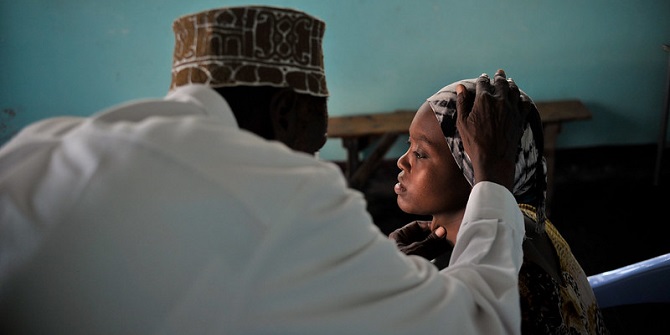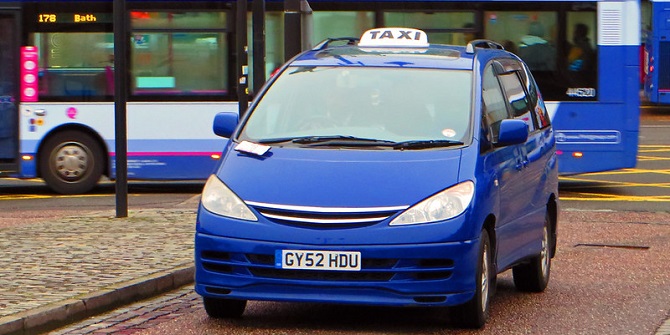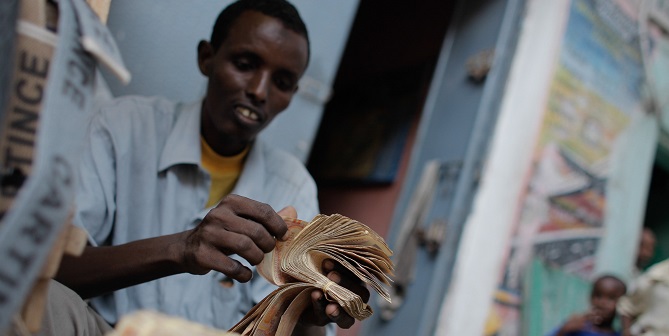
Many Somalis have been exposed to various forms of extreme violence over decades. In north-eastern Somalia (today’s Puntland) and in north-western Somalia (today’s Somaliland), the brutality of the previous Somali government against civilians began in the late 1970s and early 1980s. Torture, rape and killings were used to curb opposition. Violence escalated further with the bombardments of the cities of Hargeysa and Bur’o. The rest of Somalia plunged into a brutal civil war 1991 which today (2020) is not over. Even in Somaliland, which in May 1991 seceded unilaterally from Somalia, warring continued until the mid-1990s.
This article focusses on the ‘shadows of war’ (Nordstrom 2004), that is, the long-term effects of the violence people experienced at the individual level, which often go unrecognised by those observers who are only looking at the ‘big politics’ of war and peace. The driving questions are: How does the life of those Somali women look, who experienced sexual or other forms of violence? What happened to all the Somali men who were socialised with brutal violence (as active guerrilla fighters or otherwise)? In the following, I outline two vignettes which illustrate some long-term effects of violence ordinary Somalis experienced. The stories are dramatic. But one should realise that these kind of experiences have been made by thousands Somali men and women over the past four decades and they actually have a wider social relevance, particularly if one accepts that trauma can be transmitted over generations (Argenti and Schramm 2009).
Vignette 1: Mariam’s story
Mariam was around eight or nine years old when the Somali government collapsed in January 1991. She had been born in Mogadishu to parents genealogically belonging to the northwest (today’s Somaliland). When Hawiye militias took over Mogadishu and started hunting patrilineal relatives of the late President Mohamed Siyad Barre, Mariam and her relatives fled first to Kismayo, then to the north. Her parents were divorced. The father died (of natural causes) in Djibouti around 1991. The mother lived in Bur’o. When Mariam came with her paternal aunty to the north, she soon was given to her mother. Unluckily, Bur’o was haunted by violence again in 1993 and 1994, when various Isaaq clans fought each other. A half -brother of Mariam was involved in the fighting. One night, he came home, maybe intoxicated and/or shocked by his own experiences of violence, and raped his little half-sister. This was the first time Mariam was abused. Her elder (half-)siblings and her mother recognised what had happened, but in an attempt to cover up the shame, remained silent. The rapist half-brother was soon afterwards killed in the inter-clan fighting. This was seen as punishment for his sins by the family. Obviously, however, Mariam had been substantially derailed by what had happened to her. Soon she fell out with her mother and moved in with her paternal family further east.
Her new place of residence was also insecure, but less because of inter-clan fighting than because of the activities of local gangsters. Around 1996, one of the gangsters abducted Mariam and some nine months later, at around 15 years old, she gave birth to her first child. Her paternal relatives were disgusted by the shame Mariam had brought over the family and arranged that she would live with an aunt in Eastleigh, Nairobi. The aunt took care of the baby; Mariam was disoriented. She ended up with the wrong crowd in the streets of Nairobi and subsequently experienced two years of clubbing, forced prostitution and gangbanging. At around 17 years old she had a clandestine abortion. When she was around 18, one of her ‘lovers’ married her. Up until she was 20 she gave birth to two children in wedlock. But the relationship broke apart and Mariam fled her (increasingly violent) husband with her youngest child (her other two children remained in Nairobi). She returned to eastern Somaliland, where the eight-month old baby died of diarrhoea.
Mariam moved on; externally she seemed fine but internally, she was completely beside herself. There were many men who sensed her condition and (ab-)used her. She was by far not the only young woman in those days between Hargeysa and Lasanod who was floating in a space that was officially silenced (since it violated basic cultural and religious norms) but was actually very visible, if one knew where to look. In 2005 Mariam had a physical and mental breakdown, she became sick, suffered from epilepsy and was treated in various ways – religiously, but also by a local psychologist who recommended she should stop remembering what had happened to her. Eventually she recovered, turned religion (by joining activities of a Sufi congregation) and managed to establish a new family. With her new husband she had three children. Yet, also this relationship broke apart and Mariam took her small children along and moved in with her mother. Soon afterwards she found another provider for her and her kids and married him. Two more children were born, but the new husband soon exhibited signs of accelerating mental illness and eventually left the family. Since 2016, Mariam is raising her youngest five children alone, seeking help from her maternal and paternal relatives. However, given her complex and in the eyes of many Somalis, ‘shameful’ personal history, support is erratic and often not enough. She is still vulnerable to sexual abuse which takes place under the cover of ‘friendship’. Her great hope is that she eventually manages to migrate and start a new life abroad.
Vignette 2: Yusuf’s story
Yusuf was around 13 when Hargeysa was bombarded by the Somali National Army in 1988. He fled and joined the Somali National Movement (SNM), the guerrilla fighting the army. Soon he became recognised as an extremely brave fighter and was put behind the big gun (‘deshike’) on a ‘technical’, which is the name for the (usually) Toyota pick-up trucks with machine guns mounted on top, used as battlewagons in the Somali civil war. In his two years of guerrilla fighting, he had many experiences of hand-to-hand combat and once was left with a bullet in the leg on the battlefield while the national army was advancing. He prepared for his own death when he was rescued in the last second by comrades. After the SNM had taken control of much of north-western Somalia and Somaliland was declared an independent state in 1991, Yusuf did not find his way back into civil life. He continued to live as local gangster in his later teenage years, looted his own people and abused local women. He was recruited into the inter-clan fighting in Hargeysa 1993-1994 and sustained another bullet injury, which left him with a limping leg. Only in 1997, a new life began when he was hired as security guard by a local company and eventually turned to religion when joining the Tabliq movement in 1999. He then definitively left drugs and violence behind.
Regarding the building up of a stable family, he had no luck. Yusuf had two children from two women, but the relationships had never worked out. He had countless affairs, but these were leading nowhere. He looked for a diaspora girl to establish a real family and go abroad. In 2004, he fell in love with a Somali girl from Europe who had come over to Somaliland for summer holidays; but the girl’s father ended the romance by refusing to give his daughter in marriage to someone like Yusuf, a former gangster and womaniser. Yusuf was devastated. It may also have been the case that he realised that, with around 30 years, he might have to search for his fulfilment elsewhere. Additionally, he was still haunted by traumatic memories of his violent past. He spoke about it occasionally with friends.
For reasons incomprehensible to many, he joined Al Shabaab. In those days, 2007-2008, Yusuf was by far not the only young man from Somaliland who volunteered to join what many perceived back then as a struggle in defence of the Somali nation (as a whole) against an illegitimate and brutal intruder: the Ethiopian army. It is worth remembering that the foreign intervention forces committed numerous massacres of Somali civilians in southern Somalia, which outraged many, not just those holding sympathies for Islamist extremists or those believing in Somali unity. Yusuf went south and fought in Mogadishu, far away from home. He married (with the help of Al Shabaab), fathered a child and was put in charge of a small platoon. Finally, he was lethally injured in battle in late 2008.
Making sense
Now, if one thinks about Mariam’s and Yusuf’s stories, it is obvious that violence influenced their lives. Some of the violence was directly related to the armed conflict (like Yusuf’s experiences on the battlefield), some was more a by-product of the general lawlessness and disorientation (like Mariam’s abuse behind closed doors). Both Mariam and Yusuf experienced a series of traumatic events, the effects of which lasted years after the events. Up until today, Mariam and her children live in precarious conditions, which is a direct effect of the sexual violence Mariam had experienced from childhood onward. She never managed to forge a stable relationship. There is a real danger that her oldest daughters, who are young teenagers now, will suffer the same abuse given the lack of protection for them by immediate and extended family. Yusuf, who had participated in the struggle against state oppression in the late 1980s, had real difficulties of settling into a civil and peaceful life in Somaliland. Like Mariam, he also never managed to set up a stable family on his own. At one point, he must have felt that he was at the ‘losing end’ in Somaliland (despite the successful peace and state-building processes in the country, at a general level). Al Shabaab offered an effective way of finding fulfilment as a fighter; also a young wife was arranged for Yusuf; and finally, he was assured forgiveness in the hereafter (as part of the group’s jihadist propaganda). This led him to die for a cause that, when we knew each other, seemed very far from his concerns.
At a general level, one can argue that (parts of) the trauma Mariam and Yusuf were suffering from, were ‘unspeakable’ in the local context. They did not fit the established narratives of suffering and virtue constituted, for example, by the heroic discourse of the SNM in Somaliland, which excludes any perpetrators, or by the Islamic and traditionalist Somali provisions which, particularly regarding sexual violence, often blame the victims and otherwise encourage silence and leaving the settlement to Allah. Because Mariam’s and Yusuf’s experiences collided with moral and political norms in the region, they were silenced. This perpetuated their personal problems. Of course, many traumatised Somalis may search and find culture-specific remedies. Many turn to religion or the family as institutions that provide orientation and guidance (McGraw-Schuchmann and McDonald 2004; Carroll 2004; Tiilikainen 2010). Still, even these institutions may, as the cases of Mariam and Yusuf show, not always provide sustainable solutions. While certainly outside interventions cannot effectively tackle these complex and sensitive problems, it is worth thinking what could provide a remedy for those many men and women who suffer from the long-term effects of violence in Somalia. A first step could be to provide space – in a culturally appropriate way – for victims and perpetrators to express grief and horror and to assist those affected with building up stable livelihoods.
References
– Argenti, Nicolas and Katharina Schramm 2009: Introduction: Remembering Violence: Anthropological Perspectives on Intergenerational Transmission. In Nicolas Argenti and Katharina Schramm (eds): Remembering violence: anthropological perspectives on intergenerational transmission. New York: Berghahn, 1-39.
– Carroll, Jennifer K. 2004: Murug, Waali, and Gini: Expressions of distress in Refugees from Somalia. The Primary Care Companion to the Journal of Clinical Psychiatry vol. 6, no. 3: 119-125.
– McGraw-Schuchman, David and Colleen McDonald 2004: Somali Mental Health. Bildhaan – An International Journal of Somali Studies vol. 4: 65-77.
– Nordstrom, Carolyn 2004: Shadows of War Violence, Power, and International Profiteering in the Twenty-First Century. Berkeley: University of California Press.
– Summerfield, David 1999: A critique of seven assumptions behind psychological trauma programmes in war-affected areas. Social Science and Medicine vol. 48: 1449-1462.
– Tiilikainen, Marja 2010: Spirits and the Human Worlds in Northern Somalia. In Markus Virgil Hoehne and Virginia Luling (eds): Milk and Peace, Drought and War: Somali Culture, Society and Politics (Essays in Honour of I.M. Lewis). London: Hurst, 163-184.
Note: The CRP blogs gives the views of the author, not the position of the Conflict Research Programme, the London School of Economics and Political Science, or the UK Government.





